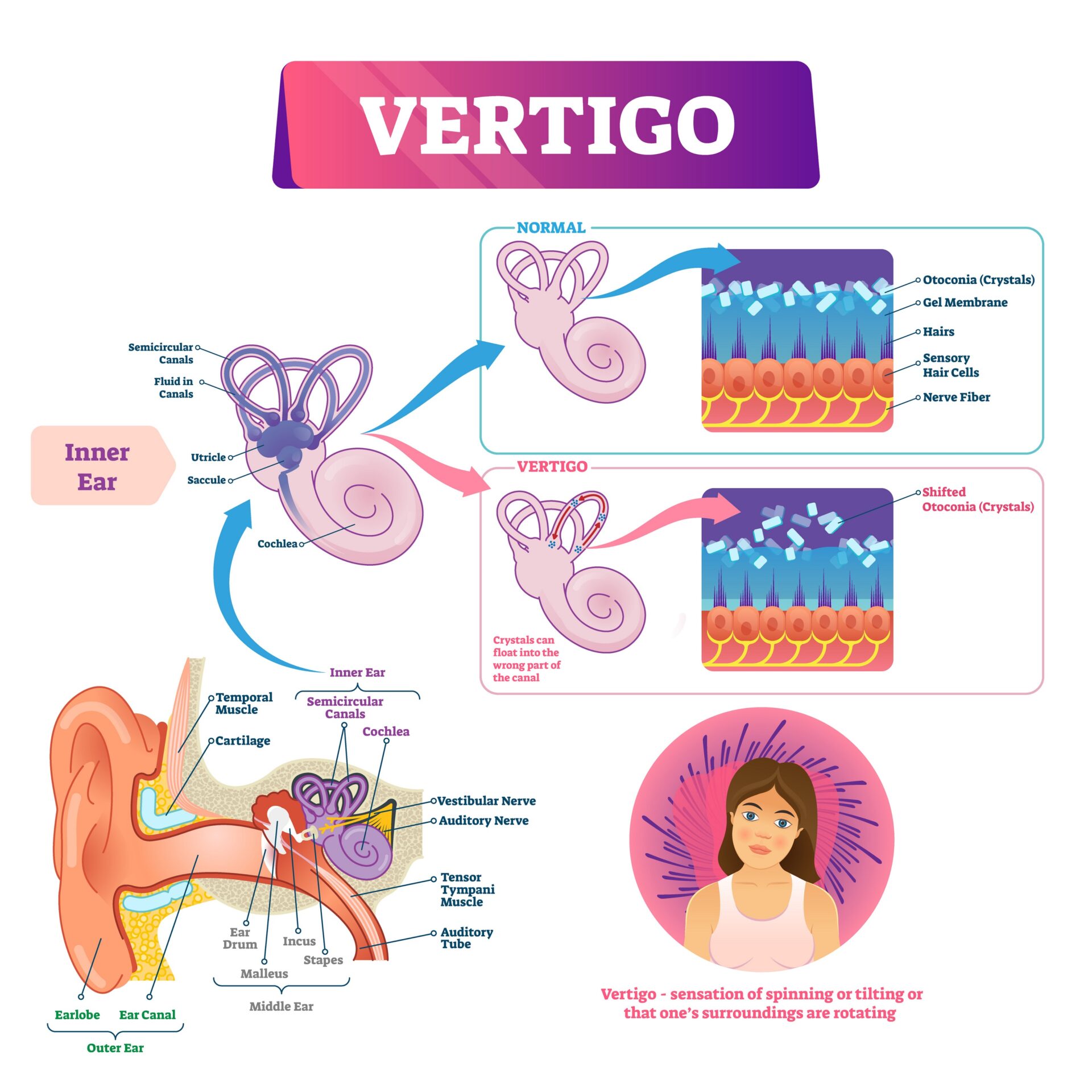Authored by Anthony Baldachino, PT, DPT, a doctor of physical therapy at AOSMI, specializing in Vestibular Rehabilitation Therapy (VRT). Vertigo, often described as a sensation of spinning or swaying even when stationary, is a vestibular disorder that disrupts balance and spatial orientation, causing dizziness and discomfort. Vertigo can make even the simplest tasks feel like navigating a spinning maze, disrupting your daily routine and causing significant discomfort. Vestibular Rehabilitation Therapy (VRT) is a proven physical therapy treatment that can provide relief from vertigo’s disruptive effects. At AOSMI, we are looking forward to working with you so we can restore control over your movements, activities, and life – allowing you to live your life to the fullest.

Understanding Vertigo
Vertigo is a sensation of spinning or movement when you’re actually still. It’s like your body’s internal compass is malfunctioning, often due to problems in the inner ear or disruptions in the brain’s balance centers. Inner ear issues like benign paroxysmal positional vertigo (BPPV) or inflammation of the vestibular nerve can trigger vertigo. Symptoms can range from feeling lightheaded and unsteady to experiencing nausea and imbalance. Seeking professional help is crucial for accurate diagnosis and tailored treatment plans to address the root cause of vertigo.
The Role of Physical Therapy Treatment for Vertigo
Vestibular Rehabilitation Therapy (VRT) is a specialized form of physical therapy treatment designed to tackle vertigo head-on. Physical therapists assess and diagnose vertigo by evaluating balance, gait, eye movements, and other vestibular functions. VRT targets the underlying issues within the vestibular system, helping the brain adapt to abnormal signals and promoting recovery. Through a series of exercises and maneuvers, VRT retrains the brain and body to regain balance and stability, ultimately alleviating vertigo symptoms.
Vestibular Rehabilitation Therapy Exercises: Techniques for Restoring Balance
VRT exercises are tailored to individual needs, focusing on specific aspects of vestibular function.
- Gaze stabilization exercises, where you focus on a fixed point while moving your head, help improve visual stability and reduce dizziness.
- Balance training exercises challenge your equilibrium, gradually improving your ability to stay steady on your feet.
- Habituation exercises involve repeated exposure to movements that trigger vertigo, helping your brain become desensitized over time. Consistency and compliance with these exercises are key to maximizing their effectiveness and achieving long-term relief from vertigo.

Benefits of Vestibular Rehabilitation Therapy for Vertigo
VRT offers a multitude of benefits beyond symptom management. By improving balance and coordination, VRT enhances your ability to perform daily activities with confidence and ease. As vertigo symptoms decrease, so does associated discomfort, leading to a marked improvement in quality of life. Moreover, VRT serves as a critical tool in fall prevention, reducing the risk of injuries and fostering greater independence in daily living. If you’re struggling with vertigo, VRT may be the key to reclaiming stability and restoring equilibrium to your life.
If you are experiencing the symptoms above and want to learn more about Vestibular Rehabilitation Therapy, a proven physical therapy treatment for vertigo, please request an appointment with Dr. Anthony Baldachino and Dr. WenBin Kuang at AOSMI today!







